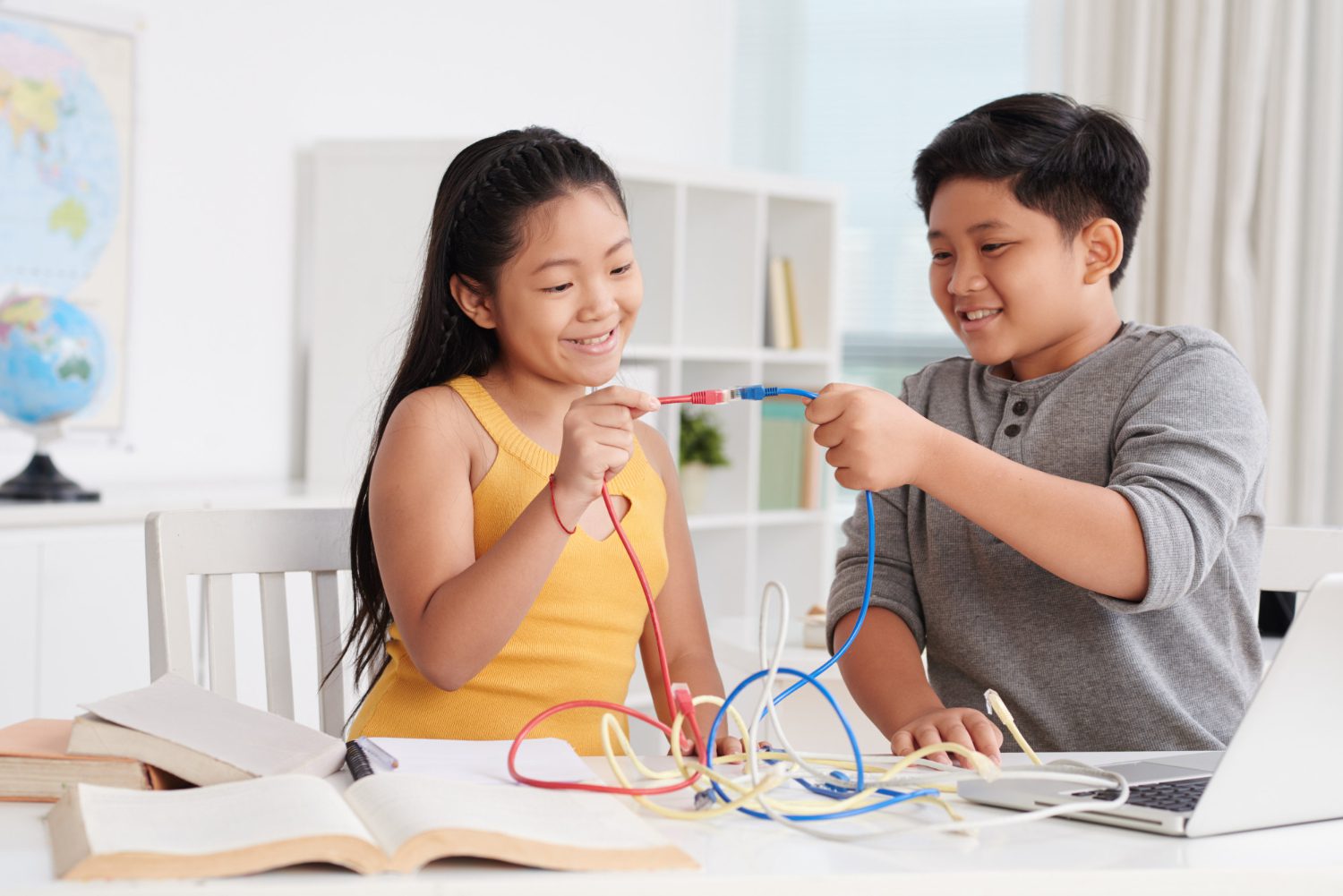If you’ve noticed more families discussing homeschooling lately, you’re not imagining things. In 2025, homeschooling isn’t just a backup plan, it’s a conscious choice for a growing number of parents across the U.S. What’s driving this shift? From changing perceptions of traditional schools to the influence of public figures and a desire for more personalized learning, families are redefining what education looks like for their children.
Let’s explore why homeschooling is booming, who’s leading the charge, and what it means for the future of learning.
The Rise of Homeschooling:
Homeschooling exploded during the pandemic, but here’s the surprise: the trend hasn’t faded. According to the U.S. Census Bureau, nearly 11% of households reported homeschooling in 2021, up from just 3% pre-pandemic and those numbers have held steady or even grown in many states since then. In fact, 90% of reporting states saw no decline in homeschooling participation last year, with some states like North Dakota and Wyoming hitting record-high enrollments. Analysts now project that by 2030, nearly one-third of U.S. students could leave public schools entirely.

This isn’t just about school choice. It’s about parents opting into a system that actually works for their kids.
Why Are More Parents Choosing Homeschooling?
1. Personalized Learning for Every Child
Traditional classrooms often struggle to meet the wide range of learning styles in a group of 25 or 30 students. Homeschooling flips that script. Parents can tailor lessons to their child’s strengths, whether they’re visual, auditory, kinesthetic, or a mix. Forbes highlights that this customization means students can move quickly through subjects they master and spend extra time where they need it, boosting both confidence and academic performance. Studies show homeschooled students often score 15 to 25 percentile points higher on standardized tests than their peers in conventional schools.
2. Meeting the Needs of Advanced and Neurodiverse Learners
For families with gifted or twice-exceptional (2e) children, traditional schools can be a tough fit. Research from EdChoice notes that many parents turn to homeschooling after trying and failing to find adequate support in public or private schools. Homeschooling allows for a mix of structured lessons and student-led exploration, giving advanced learners the flexibility and challenge they need to thrive.
3. Flexibility and Real-World Learning

Today’s homeschoolers aren’t isolated at the kitchen table. They’re participating in co-ops, hybrid programs, and extracurriculars that rival traditional schools. Some families blend online courses with in-person classes and community projects, creating a dynamic, hands-on learning environment that adapts to real life. This flexibility is especially valuable for families who travel, have unique schedules, or want to integrate passions like entrepreneurship, the arts, or environmental activism into daily learning.
4. Dissatisfaction with Traditional Schooling
A growing number of parents are simply dissatisfied with the conventional education system, whether it’s concerned about curriculum, school safety, mental health, or a desire for more values-driven education. Public figures and influencers sharing their positive homeschooling experiences have also helped normalize the choice, making it more accessible and less stigmatized.
How Homeschooling Is Changing the Education Landscape
The homeschooling movement in 2025 is diverse, innovative, and community-driven. Entrepreneurial parents are building new learning environments like micro-schools, co-ops, and modular learning platforms that blend the best of online and offline education. Networks like the Church Schoolhouse Network allow families to access unlimited in-person classes while maintaining the flexibility of homeschooling.

Importantly, homeschooling is no longer seen as a one-size-fits-all solution. Families can choose from a spectrum of options from fully parent-led education to hybrid models and specialized programs for gifted or neurodiverse students. The movement is also becoming more inclusive, with a significant rise in Black homeschoolers and families from diverse backgrounds joining the trend.
How does homeschooling improve academic performance over public schools?
1. Personalized Learning Pace and Style
In a homeschool environment, lessons can be tailored to a child’s unique learning style, whether they’re visual, auditory, hands-on, or a mix. Unlike public school classrooms where teachers often have to teach to the average pace of 25+ students, homeschoolers can move faster through what they master and slow down where they struggle.
2. More One-on-One Attention
Homeschooling offers direct access to the teacher, often a parent or tutor; meaning feedback is immediate and instructional time is much more focused. This reduces distractions and maximizes comprehension. The U.S. Department of Education has noted that the teacher-student ratio in homeschooling is often 1:1 or 1:3 compared to 1:16 to 1:25 in public schools a major factor in improved retention and performance.

3. Reduced Classroom Distractions
Public schools often struggle with issues like disruptive behavior, classroom noise, or overcrowding. Homeschooling eliminates most of these distractions, creating an environment that’s conducive to deeper focus and learning.
4. Real-Life, Experiential Learning
Homeschooling lets students connect academics to the real world, through travel, volunteerism, internships, and hands-on projects. This real-world learning often reinforces academic concepts in a more engaging way than textbook-only teaching.
5. Freedom to Dive Deep into Subjects of Interest
In public schools, the curriculum is often standardized and time-limited. In homeschooling, kids can explore a topic as deeply and as long as they’re interested, nurturing intellectual curiosity and mastery. Gifted or advanced learners often perform better in homeschooling setups due to this flexibility.
Top Teaching Methods That Work in Homeschooling
Homeschooling today isn’t just about books at the kitchen table, it’s about flexibility, personalization, and making learning actually stick. Here’s a quick breakdown of the best teaching methods real families are using in 2025:

1. Modeling & Scaffolding: Think of this as “show, guide, then let go.” You model the concept, walk your child through it, and gradually step back as they gain confidence. Great for visual and hands-on learners.
2. Inquiry-Based & Active Learning: Instead of spoon-feeding facts, kids ask questions and explore to find answers. Active learning includes debates, experiments, and projects perfect for building critical thinking and keeping them engaged.
3. Experiential & Field Learning: Learning outside the four walls. Whether it’s museum visits, volunteering, or real-world science projects, this method connects lessons to life. It’s memorable, practical, and fun.
4. Gamified & Fun Learning: Turn lessons into games with points, badges, or challenges. It boosts motivation and works especially well for younger kids or those who learn best through play.
5. Personalized & Adaptive Tools: Platforms like Gradely use AI to tailor lessons to each child’s strengths and pace. It’s data-backed, progress-driven, and super helpful when you’re juggling multiple learners.
6. Classical, Montessori & Charlotte Mason:
- Classical: Deep thinking through grammar, logic, and rhetoric.
- Montessori: Self-led, hands-on learning with a focus on independence.
- Charlotte Mason: Literature-rich, nature-centered learning that nurtures both head and heart.
7. Unit Studies & Projects: Choose a theme and explore it across subjects. Want to study space? Read sci-fi, learn physics, write reports, all tied together. Project-based learning lets kids build, research, and present real-world solutions.
8. Hybrid & Online Learning: Mix home learning with online classes or local co-ops. This keeps things fresh, fills in subject gaps, and gives parents breathing room.
9. Unschooling (Child-Led Learning): Let your child’s interests lead. It’s less structured, and more curiosity-driven, great for kids who thrive outside traditional models.
10. Team-Based & Co-op Learning: Group learning builds social skills and collaboration. Co-ops or small group classes offer teamwork, mentorship, and a sense of community.
Conclusion
Homeschooling in 2025 is about more than opting out of traditional education, it’s about opting into a more personalized, flexible, and empowering way to learn. With support from technology, innovative community networks, and a growing acceptance of alternative education, families are taking charge of their children’s learning journeys like never before. Whether it’s to better meet a child’s unique needs, foster a love of learning, or simply find a better fit, homeschooling is reshaping the future of education, one family at a time.




